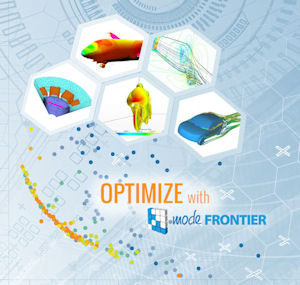Latest News
February 5, 2013
 |
You all know the maxim that a camel is a horse designed by committee. We’ll skip that it can mean a utopian design process and forget that camels are keenly optimized for desert life. Instead, focus on it as a disparaging statement describing a development process that welds together the results of independent development teams and produces an end product that’s over optimized or simply not quite what you had envisioned.
Such processes often are the norm in complex new product development where you have multi-disciplinary teams working diligently and alone on their individual objectives to create the best of all designs. So you get CAD designs that look good but lack optimized airflows, which hardly matters because the structural integrity preferred by the FEA gurus isn’t going to get off the ground anyway. So, you engineering managers gather these designs, make trade-offs, and strike compromises. Then, well, your optimized horse now looks like a camel.
Today’s Check It Out read offers a solution that can eliminate such humps. “Navigating the New Frontier of Simulation,” a brand new five-page PDF, describes ESTECO’s modeFRONTIER solution. The thumbnail on modeFRONTIER is that it’s process integration and automation technology intended to facilitate multi-objective, multidisciplinary optimization and to help you develop more innovative product designs by bringing balance, rigor, and automation into your simulation processes. It is a framework that helps you build the workflows, couple diverse CAE tools, integrate processes, and establish clear communications between your development teams. Your teams are fully engaged in their roles with their preferred simulation tools while being fully plugged into a design’s big picture. So, instead of management gathering all the work late in the process then hammering out trade-offs among conflicting objectives, your multi-team work is meshed from the start.
But a key to understanding modeFRONTIER is that it offers algorithms to help you find optimal results across disciplines without compromising your system’s integrity. This functionality includes things like design of experiments methods, meta-modeling, decision support tools, and robust design analysis techniques. It also has a neat-sounding tool for principle extraction called CAP (Computer Aided Principle) that focuses on effects (or trends) of combinations of multiple variables instead of focusing solely on the effects of a single variable.
The paper itself covers modeFRONTIER’s three main capabilities: process integration and automation, optimization, and data visualization and analysis. These functions are broken down into constituent components, but the presentation never bogs you with technical minutia in what could, in less capable hands, be a highly dense tome. This is a clear plus since the paper’s purpose is to introduce you to modeFRONTIER and explain to you a bit about the capabilities it provides for harnessing your multi-objective, multi-disciplinary simulation environment.
A pair of quick case studies on how Bombardier Transportation and BMW exploit modeFRONTIER is where the paper really shines. These you’ll want to study a bit. See, at first glance they are short, but then it dawns on you that what they say so briefly is simply astonishing.
And that “I have to study more” motif was my takeaway here. modeFRONTIER is much more than this very well done albeit short paper, and far beyond my little spiel. So, I suggest that after you download the paper, hit the modeFRONTIER tab over on the top right and start studying what this system is all about. It’s a horse of a different color, that’s for sure.
Thanks, Pal. – Lockwood
Anthony J. Lockwood
Editor at Large, Desktop Engineering
Subscribe to our FREE magazine, FREE email newsletters or both!
Latest News
About the Author
Anthony J. Lockwood is Digital Engineering’s founding editor. He is now retired. Contact him via [email protected].
Follow DE





